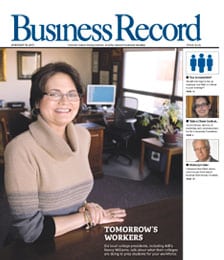Housing slump’s effect on trade putting brakes on industrial sector

Citing the housing slump’s negative effect on retail sales, logistics and global trade as primary culprits, Grubb & Ellis Co.’s first-quarter report on the U.S. industrial real estate market paints a bleak picture for the sector during the rest of 2009.
The report points to declining port activity and retail sales as main reasons for lessened demand in this “traditional expansion market” and though the sobering numbers aren’t too surprising considering the recession’s toll, the “traditional resilience” of the industrial market is being questioned.
Not only has the housing market’s impact on retail sales diminished demand, a devastated construction industry also has less need for industrial space, exacerbating the problem. Rising vacancy rates in portions of California, Arizona, Nevada and Florida are examples of how shrinking demand is most prevalent in areas hit hard by the housing crisis.
Over the past year, Los Angeles County had the nation’s lowest industrial vacancy rate, 2.7 percent, compared with the highest in Reno, Nev., at 15.2 percent. Only a small number of markets, including Oklahoma City and Indianapolis, recorded declining vacancy rates for the same period.
The industrial sector’s overall average vacancy rate ended at 9.5 percent for the first quarter, its highest level in 4 1/2 years, the report stated, adding that the number will likely surpass the 10.1 percent peak it achieved following the 2001 recession.
Compared with a negative net absorption of 37 million square feet spread out over four quarters during and after the 2001 recession, a negative 40 million square feet were absorbed in the first quarter of 2009 alone.
Space under construction, meanwhile, fell to 40 million square feet at the end of the first quarter. According to Grubb & Ellis, it’s the lowest level since at least the early 1990s.
The warehouse and distribution segment was singled out as the hardest hit in the first quarter of 2009, accounting for more than half of the overall negative absorption and 85 percent of the new space added to the market.
The average asking rental rate for all types of industrial space offered on the market at the end of the first quarter was $5.57 per square foot per year triple net, a decline of 1 percent from the last quarter of 2008. Landlord concessions and periods of free rent pushed the effective rental rates for industrial space down 15 percent over the past four quarters.
The report predicts that though industrial vacancy rates will crest below the 13.7 percent experienced in 1990-91, the industrial market is not likely to bottom out until the second half of 2010, only to begin a “sluggish recovery” the following year.
The Greater Des Moines market ended the first quarter with an overall industrial vacancy rate of 6.6 percent, said Morey Knutsen, a senior vice president with Grubb & Ellis/Mid-American Commercial. And though the local outlook isn’t as grim as the national forecast, “it’s going to get worse,” Knutsen said.
<a href="http://www.businessrecord.com/main.asp?Search=1&ArticleID=7876&SectionID=4&SubSectionID=43&S=1
“>Click here to read related article.







